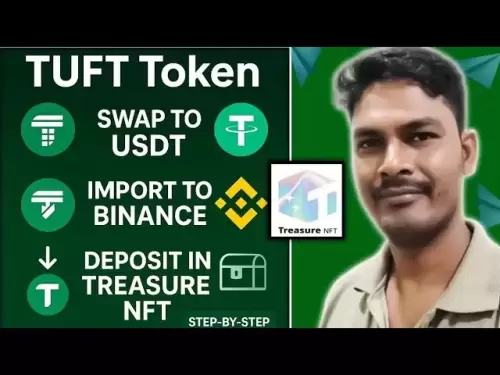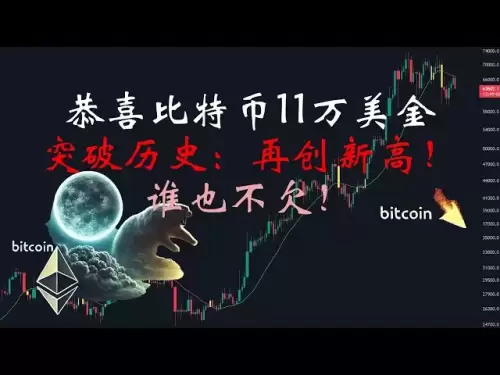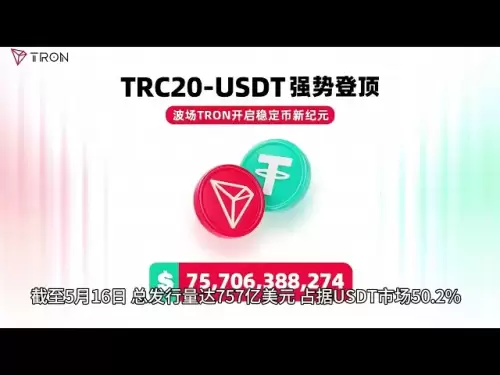 |
|
 |
|
 |
|
 |
|
 |
|
 |
|
 |
|
 |
|
 |
|
 |
|
 |
|
 |
|
 |
|
 |
|
 |
|
Cryptocurrency News Articles
Polygon NFT Surges Past Ethereum as RWA Tokenization Expands the Market
Apr 22, 2025 at 10:14 pm
In a surprising development for collectibles in the digital world, the Polygon NFT surged past Ethereum-based tokens in weekly revenue.

In a surprising turn of events, Polygon (CRYPTO: MATIC) collectibles have outperformed Ethereum (CRYPTO: ETH) tokens in seven-day revenue, marking a pivotal moment for the digital collectibles ecosystem.
What Happened: According to CryptoSlam data, Polygon registered $22.3 million in token sales during the past seven days. This figure represents a 20% increase from the prior week and forms 24% of the total global NFT sales volume.
ETH, the industry leader, follows with $19.2 million in sales.
This momentum is largely driven by Courtyard, a marketplace focusing on real-world assets (RWAs). The courtyard has captured attention from crypto enthusiasts and traditional collectors.
By tokenizing physical collectibles, the marketplace has transformed the value proposition for NFTs. The platform contributed to $20.7 million in sales, helping Polygon lead charts and redefining the utility of blockchain assets.
How Are Real-World Assets Transforming NFT Value?
The Courtyard collection, a game-changer for the Polygon NFT ecosystem, is a significant contributor to this performance. It highlights the broader trend of tokenizing tangible assets.
Instead of offering speculative digital art, Courtyard presents digital collectibles backed by valuable physical cards, stored securely. Buyers can hold their NFTs as tradable digital assets or burn them to redeem the physical item.
This hybrid model attracts traditional collectors and digital asset enthusiasts, ensuring asset security while enhancing liquidity for easier trading. It bridges the gap between physical ownership and digital representation.
This strategy has been highly effective, evident in the 81% surge in Polygon NFT buyers last week.
What Gives Polygon Its Edge in the Market?
The recent surge in demand for Polygon NFT projects reflects broader dynamics influencing the sector. While Ethereum long enjoyed dominance from its early adoption, it is struggling now with high gas fees and congestion, prompting users and developers to explore alternatives.
Polygon offers lower transaction costs and faster speed, emerging as a compelling choice.
Image 1 – Top blockchains by seven-day NFT sales volume. Published on CryptoSlam, April 22, 2025
Courtyard’s success suggests niche platforms focused on real-world utility can thrive on Polygon. As overall NFT sales dipped recently, Polygon’s notable rise stands out significantly. It represents a rare bright spot, showing resilience amid a cooling market.
This performance will pressure legacy platforms within the NFT market to innovate or risk losing relevance.
Why Is RWA Tokenization Becoming Crucial For Blockchains?
Beyond sales metrics, Polygon’s success signals the broader real-world asset tokenization trend. Figures from RWA.xyz show tokenized RWAs reached $21.2 billion globally in the first quarter of 2025.
The data reveals there are over 97,000 asset holders worldwide in this growing segment. These numbers illustrate that RWAs are more than a niche interest; they are becoming foundational for blockchain adoption.
Unlike stablecoins (with a $227 billion market value), RWAs introduce a new asset class onto the blockchain. Polygon’s alignment with this trend positions it well to attract future projects. These projects will likely combine physical and digital asset classes. The Courtyard example could be a blueprint for the art, property, and collectibles industries exploring blockchain.
What Does Polygon’s Rise Mean For The Future Of NFTs?
Polygon’s climb with the Polygon NFT category marks a turning point for the industry. It affects platform rankings and the narrative surrounding digital collectibles. The NFT market, once dominated by speculative art and profile pictures, has evolved significantly, becoming a more utility-driven, inclusive market.
By enabling RWA support and improving accessibility, Polygon helps reshape what NFTs can represent.
Looking ahead, the key question is whether Polygon can maintain its lead. Competitors like Ethereum and Bitcoin likely won’t remain static, so competition will intensify. However, if Polygon aligns with trends like RWAs and maintains innovation, its momentum could grant it long-term NFT leadership.
Disclaimer:info@kdj.com
The information provided is not trading advice. kdj.com does not assume any responsibility for any investments made based on the information provided in this article. Cryptocurrencies are highly volatile and it is highly recommended that you invest with caution after thorough research!
If you believe that the content used on this website infringes your copyright, please contact us immediately (info@kdj.com) and we will delete it promptly.

























































